Can moonlight and a magnifying glass be used to start a fire? Why do bananas go brown and does it happen faster in the fridge or the fruitbowl? Why are ice and snow slippery? And how does flyspray work? Alongside your quality science questions in this week's Question and Answer science phone-in, we also hear how how space scientists have spotted a whole planet's worth of water in a nearby system, the surprising discovery that seaweed is making corals seasick, we serve up a digital delight with the kitchen that teaches you both to cook and speak French, and we find out why an antiviral a day could keep Alzheimer's at bay...
In this episode

Does unseasonable weather confuse plants?
Emily - So that's a really good question. I've been confused myself. I went from flip-flops to winter coats and back again! I think that it's even more important for the plants to know when winter is - they can't just nip to the shops. They have to have reserves for winter and know which season is coming so that they can prepare. They do this by measuring day length so they can know that if you've got a lot of night time and not very much day, then you're in the middle of winter and of course, the other way around as well. So if you've got a lot of sunlight and not very much night time, then it's in the middle of summer. But you can imagine that spring and autumn would be a bit of a confusing area because the day length can be very similar. And it's very different in springtime, you're waking up, you're sprouting, you're making flowers. Whereas in autumn, you've got to do the opposite - you've got to lay down reserves and get ready for winter. So plants have a mechanism to deal with this called vernalization and it's where they require a prolonged cold period before they'll germinate or flower, and this will stop them making new flowers in autumn when they should be getting ready for the winter.
It's surprising how hardy and resistant most plants can be to extreme cold. You can get willow trees that can tolerate liquid nitrogen - so minus 196Ã?,°C - if they're prepared. You can't just dunk them in it. They have to have time to make cryoprotectants, and also, anti-freeze proteins. But then, they're able to deal with it very, very well. So, I would say that yes, the plants will have been a little bit confused. You might have seen some roses resprouting and the buds they've made will die, but most of them are able to judge the day length, and actually deal with it very well.
Chris - I've got a spring plant in my garden that should flower in April and it's come back into flower again. Presumably because we had that cold snap a little while ago and it now thinks, "Hey! We've had winter and now it's time for spring again."
Emily - Most of them require a bit of a longer period of cold than that, but yeah, it's probably thinking, "I'll give it a go" and if the buds die then the buds die.
Chris - That must be bad for the plant though because presumably, it's eating into reserves it's built up over the summer that are now going to be used to sustain it over the winter, and they won't be there.
Emily - It's not ideal, you're right but it's not the end of the world. So the plant will have enough reserves normally. It can store them in tubers and that sort of thing.
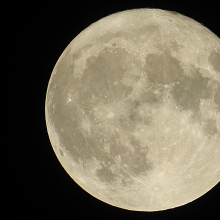
Can we use moonlight to start a fire?
There is actually a limit to how much you can magnify the light in an object with a lens because of a fundamental law of optics that says:
"In order to make something appear, let's say, ten times brighter, you have to make it appear ten times bigger in the sky."
So when you use a magnifying glass to make the sun appear perhaps 30 times brighter to set fire to a piece of paper, what you're actually doing is making the sun appear to take up 30 times the area of the sky from the piece of paper's point of view. Now, obviously you reach a hard limit when the sun's rays are coming from all directions in the sky towards your piece of paper. It's perhaps interesting to ask what temperature your paper would reach if you have a lens that could do that. And the answer is the paper would see a view of the universe, just as if it was embedded in the surface of the sun. And so, it reached for the same temperature that the surface of the sun is at, at about 6,000 degrees C.
Now moving that to the moon, the surface of the moon has an average temperature of about minus 50Ã?,°C, so that's actually quite cold. So even if you covered the whole sky with moonlight and had no sun, your piece of paper will reach a temperature of -50 and no warmer. So no, you couldn't use the moon to set fire to a piece of paper.
There is an interesting extension to that because if we think of stars as being much fainter than the moon, but stars are also much smaller. So if you magnify the light of the star up to fill the whole sky, you'll reach the temperature of the surface of that star. You could potentially use a star to set fire to a piece of paper. And in fact, there is a paper that was published in 2002 with a design of a telescope for doing exactly that.
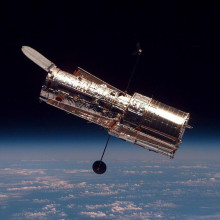
06:35 - Water in Another Solar System
Water in Another Solar System
Our Solar System may not be alone in having an abundant supply of water. That's according to a paper published this week in the Journal Science. Michiel Hogerheijde and his colleagues have been using the Herschel Space Observatory to study the star TW Hydrae -- a star so young, only around 10 million years old, that it's arguably still forming, but which we expect will eventually end up at around 60% of the mass of our own Sun. TW Hydrae is a very well-studied system because it's the closest example to us of such a very young star, and of particular interest is the disk of gas and dust which surrounds it, which we expect will eventually form into a planetary system not dissimilar our own Solar System.
It's interesting to ask how similar to our Solar System that planetary system might turn out to be. One of the really important characteristics of our Solar System, certainly in terms of making life possible in it, is that it has an abundant supply of water in the form of comets. We have models for where we think that water came from in the Sun's planet-forming disk. Very close in to the Sun, in the hottest part of the disk, it would have sublimed (boiled) and been in the form of water vapour or steam. But out beyond the asteroid belt, beyond what we call the ice line, it would have been frozen into solid lumps of ice, which explains why the Solar System has rocky bodies in the asteroid belt, but icy comet-like bodies further out. Those comets played a vital role in bringing the oceans to the Earth, because the Earth formed inside the Solar System's ice line, as a dry planet: only through later bombardment of comets onto its surface did water arrive and make Earth a wet planet.
Looking at TW Hydrae from the outside, we've had no trouble in the past in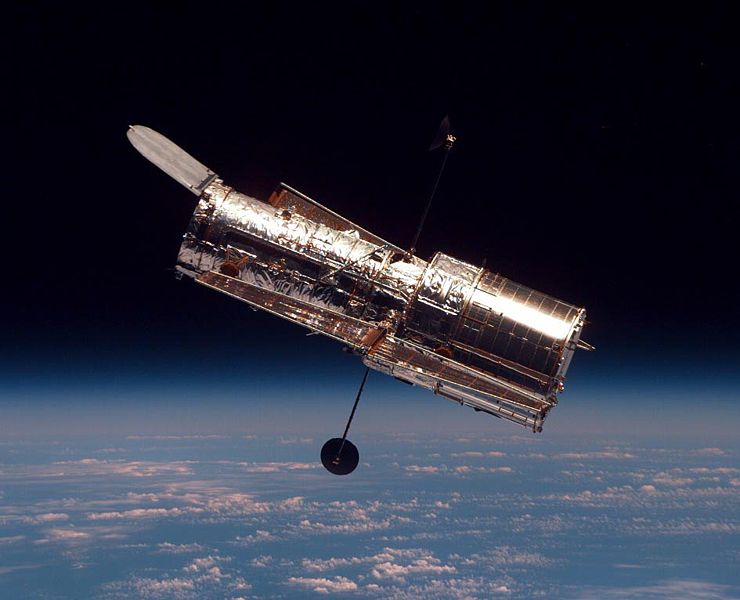 detecting water vapour in its inner central regions. But detecting whether ice is present further out has proven problematic. What Michiel Hogerheijde has done in this new study is to make use of the fact that, if ice is exposed to ultraviolet light, you'd expect a tiny fraction of the water molecules to break away from the solid lumps and form very cold gaseous water vapour. In TW Hydrae, there does indeed appear to be evidence for very cold water vapour extending a long way out in the disk, where it couldn't have formed by straightforward sublimation. So, this appears to be evidence that there is a vast amount of water ice -- several thousand times the total amount in the Earth's oceans -- around TW Hydrae, and suggests that this system has the potential to form both comets, and eventually wet habitable planets like our own Earth.
detecting water vapour in its inner central regions. But detecting whether ice is present further out has proven problematic. What Michiel Hogerheijde has done in this new study is to make use of the fact that, if ice is exposed to ultraviolet light, you'd expect a tiny fraction of the water molecules to break away from the solid lumps and form very cold gaseous water vapour. In TW Hydrae, there does indeed appear to be evidence for very cold water vapour extending a long way out in the disk, where it couldn't have formed by straightforward sublimation. So, this appears to be evidence that there is a vast amount of water ice -- several thousand times the total amount in the Earth's oceans -- around TW Hydrae, and suggests that this system has the potential to form both comets, and eventually wet habitable planets like our own Earth.
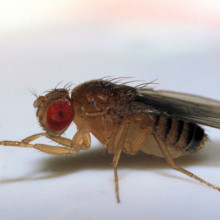
How does flyspray work?
Well, with fly spray, which is the stuff you spray on nuisance flies - usually there's a short lag and then, suddenly, the fly appears to go nuts: it speeds up its activity and then all of its movements appear to become very chaotic. Then, usually, it ends up laying on its back with its legs writhing in the air, buzzing furiously before it just expires.
What's actually happening is that the fly spray is a neurotoxin. It's got chemicals in it that inhibit an enzyme in the body of the fly called an acetylcholinesterase.
This enzyme is very important for interrupting the flow of information between motor nerves and muscles. The nerves squirt out a nerve transmitter chemical called acetylcholine. This binds to special docking stations called receptors, which are on the muscle and activate the muscle. You terminate the signal by breaking down the acetylcholine with this acetylcholinesterase enzyme.
If you inhibit the enzyme with drugs or the chemicals that are in the fly spray, what happens is that you end up stimulating the muscles too much, you don't interrupt the signal and, as a result, the fly's muscles all go into tetany - they're contracting all the time and as a result, the fly becomes nonviable and also can't move its abdomen backwards and forwards to move air in and out of its body, so it can't oxygenate its haemocele, the bag of blood inside the fly; so it basically asphyxiates as well.
So that's how fly spray works! Probably not a nice death...
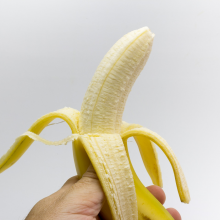
Do bananas brown faster in the fridge?
Emily - Well it's a good question and the answer is that they will brown faster in the fridge. It's mainly due to the formation of ice crystals, so if you put your banana in the fridge, the ice crystals grow, and they actually rupture the cells of the banana skin. This releases an enzyme called polyphenol oxidase and as the name suggests it acts to oxygenate phenols, which have a ring-like structure, into quinones, and these quinones can then all join together or polymerise and produce a black, brown, or red pigment called polyphenol and this is what gives it the brown colour. So, if you have your banana in the fridge, this will occur and you'll get a brown banana. But another interesting thing about bananas is that if you have them in the fruit bowl, they'll release ethene and this will make the other fruits in the bowl ripen faster because it's a ripening hormone.
Chris - So, the question is though, if this is a chemical reaction making this brown pigment, if you slow down the reaction by lowering the temperature, then it should happen more slowly, therefore, going in the fridge should make the bananas go black slower?
Emily - I can see why you're thinking that but actually, it's more the rupturing of the cells. So if you have a banana on your table, the cells are going to be intact, the enzymes contained, and the reaction is not happening at all whereas if you put in the fridge, the enzyme is released and the reaction can happen - although yes, it might happen slower.
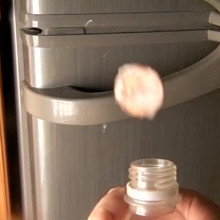
Cool coin launcher
Produce a coin launcher powered by your freezer
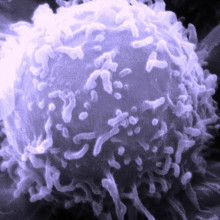
17:23 - Cause of chronic fatigue?
Cause of chronic fatigue?
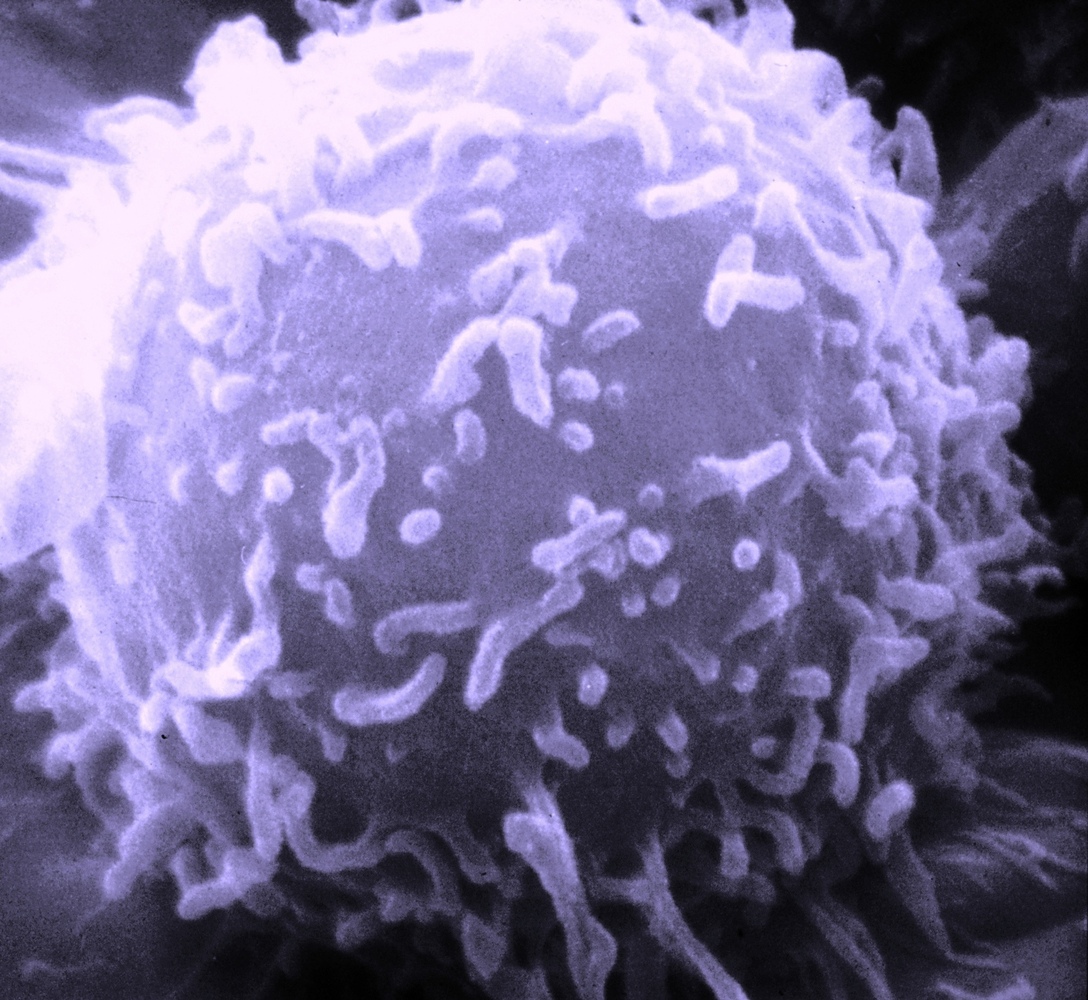 A patient receiving treatment for lymphoma simultaenously recovered from chronic fatigue syndrome, revealing a novel way to combat the conditions, researchers have revealed.
A patient receiving treatment for lymphoma simultaenously recovered from chronic fatigue syndrome, revealing a novel way to combat the conditions, researchers have revealed.
Chronic fatigue syndrome (CFS), also known as ME (myalgic encephalomyelitis), is associated with a constellation of symptoms that include severe unexplained exhaustion, disturbed sleep, headaches, muscle and joint pains as well as cognitive, sensory and even bowel disturbances. The cause of the condition, however, remains unknown. But now Norwegian scientists have found evidence to suggest that the disease may have an immune cause that can be treated by temporarily removing one class of white blood cells, called B lymphocytes, from the body.
Writing in PLoS One, Haukeland University Hospital, Bergen-based researcher Olav Mella and his colleagues decribe a double-blind clinical trial in which 30 patients diagnosed with CFS were randomly assigned to receive either a B lymphocyte-depleting drug called rituximab, or a placebo. Followed up over 12 months, 67% of the patients in the rituximab arm of the trial showed significant improvements in their own as well as physician-based assessments of their condition. Only one patient in the placebo group showed similar improvements. This strongly suggests that CFS has an immunological underpinning, which fits with the onset often following an antecedent infection of some kind.
Interestingly, the rituximab-treated patients only began to show improvements in their symptoms after about 3 months. This, say the scientists, would be consistent with the time it takes for antibodies released previously into the blood by the B cells to disappear.
The trial was initiated in the first place after the researchers administered rituximab to a patient with lymphoma, a cancer of B lymphocytes. The patient was delighted when his CFS, from which he was also suffering, simultaneously regressed alongside the lymphoma. This spurred the team to set up the present trial, the results from which, they say, strongly suggest that CFS has an immune cause and "will impact future research efforts" into the condition.

What were the repercussions of Chernobyl?
Chris - They have obviously isolated the area around Chernobyl and there are some real bad hotspots in there where if you go and take samples, you will find that plants and soil samples are very, very radioactive. People have actually been in to have a look at the reactor buildings though and there was a very interesting paper, I think it was published in the journal PLoS One, a few years back and they found, bizarrely, a kind of fungus growing inside the remains of the nuclear reactor. This fungus is very interesting because it's turned on lots of genes that make the pigment melanin, and melanin is the same stuff that makes us have brown skin and a sun tan. It's there as a way of soaking up ionising radiation or energetic rays which could damage our DNA. By the yeast making itself very, very dark, it has its own in-built body armour against radiation and in this way, it's able to resist a lot of the insults of the radioactive environment. This is one interesting example of, if you apply enormous selective pressure to nature then you can actually get some quite interesting things happening. And so, it's a really useful study area. Even though it's not necessarily a great thing to have happened, it gives us an insight into what can happen and how nature can respond in this sort of environment. I guess the plants, Emily, must be doing some interesting things as well?
Emily - It's true. So plants can actually incorporate radioactive isotopes into their bodies, so radioactive carbon-14 is actually used to study the plants and see how they distribute carbon around their bodies. So yes, the plants in that area would also be affected.
Chris - I suppose it's also worth mentioning, some scientists are looking at modifying plants to make them soak up some radioactive chemicals from the soil better and put them into insoluble forms so they get locked away in the plant and then you can clean up the soil by just harvesting the plants and destroying them. Basically, you get the components that are radioactive now in the plant. They're like a hover, sucking the things out of the soil, and it's a good way of cleaning up soil without having to cut soil away.
Emily - They are also looking at doing that for other toxic compounds. So if you've got lead in the soil, you can have a special type of currently slow growing plant, but they're working on that, and it takes up the lead and cleans up the soil.

24:42 - The French Teaching Kitchen
The French Teaching Kitchen
with Paul Seedhouse, Dan Jackson, Jurgen Wager; Newcastle University
Jane - If conjugating verbs isn't your idea of an interesting way to learn a language, the latest research at Newcastle University could be just the thing for you. Language experts and computer scientists have developed an innovative kitchen that gives lessons in cooking and French at the same time. It tracks your actions with motion sensor technology and it speaks to you as you prepare your dish. Professor Paul Seedhouse is involved in the linguistic side of the project.
Paul - This research has been based on previous research done by my colleague Patrick Olivier in Computing Science in Newcastle. He developed a digital kitchen for people with dementia. So for example, if they left the oven on for too long, it would tell them to turn it off and when I saw that, I thought that the technology could be adapted for use with language learning and teaching.
Paul - When you enter the kitchen, it looks pretty much like an ordinary  kitchen. Some of the differences you'll notice if you look at the kitchen equipment, the handles are larger than normal and that's because they have sensors embedded. And this technology you may be familiar with already, it's similar to Nintendo Wii technology, so there are sensors and they detect movement in all directions. The kitchen will then speak to you in French.
kitchen. Some of the differences you'll notice if you look at the kitchen equipment, the handles are larger than normal and that's because they have sensors embedded. And this technology you may be familiar with already, it's similar to Nintendo Wii technology, so there are sensors and they detect movement in all directions. The kitchen will then speak to you in French.
---
Paul - When you're actually doing the cooking, you have a number of alternatives open to you. You can request a repetition or you can ask for a translation or you can pause a program, you can go backwards and forwards. But a really important point about this learning environment is that we put people in pairs. Typically, one person is better at French, one person is better at cooking, and that means that they transfer the skills and they help each other to learn.
---
Paul - The recipe we've got is called a pear clafoutis and it tells you first of all to peel the pears. So first of all, it tells you to take four pairs and the system then detects that you've taken the package of pears and you've moved it onto the work surface. It then tells you to take the peeler and so, the sensor in the peeler will then detect that you've taken it over. It's being moved and then the system will then detect whether you've made the correct peeling motion with your peeler on the pears. When you've done that, it'll tell you to cut the pears into four so then it will look and see, have you taken the knife, has the knife moved over to the surface, and then have you made the correct chopping motion with the knife. If you don't make a chopping motion with the knife - let's say you move it from side to side, it won't detect that as correct and so, the system will loop back and give you the instructions again.
---
Jane - Dan Jackson and Jurgen Wagner are involved in the technical aspects of the project. They explained more about the small sensing devices that are embedded in the kitchen utensils
Dan - Fundamentally, we're interested in understanding how the objects are used and how they're being manipulated. We've developed this hardware that actually detects the motion, uses something called an accelerometer which is a device that measures the acceleration.
 Jurgen - The accelerometer inside tracks the smallest movements you do with your hands, the smallest movement you do with the utensils. These are called motion primitives and this information is sent over to a computer which acts as a base station and this base station translates these simple activities, these motion primitives into something more meaningful. Whether it was it a chopping activity, a stirring activity, or whatever activity we can measure.
Jurgen - The accelerometer inside tracks the smallest movements you do with your hands, the smallest movement you do with the utensils. These are called motion primitives and this information is sent over to a computer which acts as a base station and this base station translates these simple activities, these motion primitives into something more meaningful. Whether it was it a chopping activity, a stirring activity, or whatever activity we can measure.
Dan - So for instance, if you pick up a utensil, the device will wake up from a sleep state and it will start broadcasting its motion to the computer. And then on the computer, we can analyse that information and work out what that object is being used for. Chopping with a knife would give us a different signal to someone scraping or slicing with the same knife.
---
Jane - As well as making learning fun, Paul Seedhouse says the kitchen builds on the proven technique of task based language learning. There are now further plans to take the concept out to wider a audience.
Paul - Well, from the point of view of language learning and teaching, it's unique because it's taking the ideas, the excellent ideas of task based learning and teaching out of the classroom and if you like, into the kitchen. You're combining it with a real world task. It's also unique and that you're learning two skills at the same time: in other words, French and cooking skills. So we already have the full scale digital kitchen in Newcastle University but we have now developed a series of portable kitchens which we take out on road shows. It's basically a tablet PC, 6 implements and a pair of speakers, so it's very portable. We're going to be placing portable kitchens in four different countries in Europe and trying them out there.
Jane - The research is supported by the digital economy program run by the Engineering and Physical Sciences Research Council. In the future, this way of learning could be used to teach people any number of skills ranging from nursing to driving. This new type of kitchen could be available for schools, universities, and even the domestic market by the end of 2012.
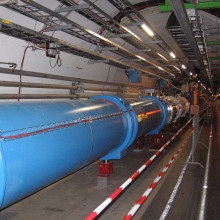
What has the LHC contributed to science so far?
Dominic - Well it's quite interesting from my point of view because I did a physics degree 10 years ago and I think one of the main thing that's come out of the LHC so far is actually disproving many of the theories that I learned 10 years ago as being very probably correct. There was a theory called super-symmetry which people were very fond of a few years ago and they thought they were probably right. But in fact, the LHC hasn't found evident of those particles, and the theory essentially appears to now be completely wrong. Obviously, you've heard a lot about the Higgs boson which is the mechanism by which we think particles acquire mass and the LHC hasn't definitely detected that yet in some of the places where it might be expected to see it, but there are still places where it could be. The LHC is a long term experiment and I think in the next few years, it's going to really see what theories are correct rather than what it's done so far in disproving some of our previous ideas, so I think stay tuned. Chris - I also think that when you have big investment in big projects that have to solve a lot of project problems to deploy and develop that project, you inevitably produce spin offs that would otherwise not have come about and I think one of the good ones, Peter Quinn who I think you met in Western Australia who's heading up the Australian bid for the square kilometre array made the point to me that actually the world wide web came from the grid that was assembled at CERN because of particle accelerators and physicists needing to share huge amounts of data. That probably wouldn't have happened, at least at the rate it has, were it not for the need to share that data because of something that could produce a huge amount of data. So I think it is kind of important, isn't it?
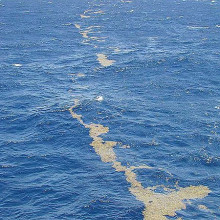
33:10 - Seaweed makes coral sea-sick
Seaweed makes coral sea-sick
Seaweeds, also known as macroalgae, can unleash a chemical arsenal toxic to corals, scientists have found.
Writing in PNAS, Georgia Institute of Technology researcher Douglas Rasher and his colleagues studied the sensiti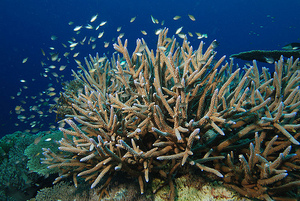 vities of 3 different coral species to 8 different types of seaweed. Bringing the two together, as might occur on a reef, resulted in bleaching, reduced photosynthesis and even death of the corals in almost 80% of cases. Physical proximity wasn't the cause, the scientists confirmed. When plastic models of the offending macroalgae were substituted for the real thing, the corals remained healthy. Instead, it turns out that the seaweeds secrete a cocktail of oil-soluble chemicals called terpenes. These can rub off on the corals, killing them.
vities of 3 different coral species to 8 different types of seaweed. Bringing the two together, as might occur on a reef, resulted in bleaching, reduced photosynthesis and even death of the corals in almost 80% of cases. Physical proximity wasn't the cause, the scientists confirmed. When plastic models of the offending macroalgae were substituted for the real thing, the corals remained healthy. Instead, it turns out that the seaweeds secrete a cocktail of oil-soluble chemicals called terpenes. These can rub off on the corals, killing them.
The seaweed most likely use the chemicals as a means of anti-microbial defense. But corals can become croppers when reefs damaged by human activities and climate change are then invaded by the macroalgae, which are able to gain a toe-hold in the first place because the ruining the reef also renders the habitat untenable for herbivorous fish that would previously have kept the weeds in check. This, say the scientists, may well explain the lack of recovery seen on many present-day reefs...
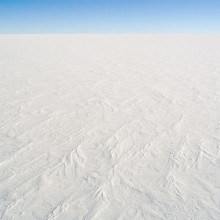
Why are ice and snow slippery?
Chris - That's a very hard to answer question actually! In fact, it's the source of a lot of disinformation. If you have a look in many, many texts and books and things, especially historically, you will find they claim that when you have an ice skate, for example, on an ice rink, the pressure of the ice skate pushing down on the ice causes the ice to increase its temperature because it's being compressed and it melts a bit, and this puts a layer of water on the surface of the ice and that means the ice skate then slides along. This doesn't stand up to scrutiny though because people wearing shoes - where the same weight is distributed over a much bigger area therefore with much lower pressure - still slipover on the ice! In fact, if you plug the numbers into the calculations, you'll find it actually only changes the temperature of the ice by a fraction of a degree. So this cannot account for why ice is slippery. It can't be a melting phenomenon. What scientists actually think is going on is that probably because you have an ice surface and there'll be water molecules on the surface which are not tethered to other water molecules, they exist more as a liquid than as a solid. So, all ice is covered in a very thin, at a molecular level, layer of water. Michael Faraday showed this quite interestingly because he got two ice cubes which are both slippery, put them together and they stuck. Now, if there wasn't water there, then wouldn't have stuck together because obviously, then the water then froze onto both. So what scientists think is going on is that there is a very thin layer of water on the surface of any ice surface and it's that water that access the lubricant and reduces the level of friction at the surface. So, I think that's probably the best explanation I can come up with. Dominic - Does that depend on the temperature of the ice? Chris - Well, to a certain extent it will, but at the same time if you've got atoms which are molecules of water which are sitting on the surface of the ice which are untethered and unbonded to other surrounding molecules then it's easier for them to have energy and detach and form a water film than it is for molecules elsewhere in the ice to move around. So, it favours the formation of a layer of water at that point which could make them slippery.
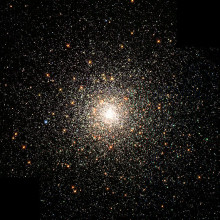
How can you measure the temperature of a distant star?
Dominic - First of all, to measure the temperature of a star, it's really about the colour of the star. If you take a piece of coal and set fire to it, as it gets hotter, it will start to glow red hot and then perhaps if it's very hot, it will start to glow yellow hot and then an intense fire will start to appear white or maybe even blue. So, by applying that logic back to a star, a blue star is a hot star and a red star is a cooler star. Chris - What about what's in the star? Dominic - Now what's in the star is more difficult, but different elements emit a very specific wavelength and produce what we called spectral lines. If you have a spectroscope that splits up the light of that star into different colours, you can see that certain colours are either not present or there's a huge amount of light at that particular wavelength, and that tells you there must atoms of a particular element emitting light in that star so you can tell what that star must be made of.
Chris:: Terrific, Dominic. In fact, Robert Bunsen was the forefather of the science of spectroscopy, so Bunsen of burner fame also discovered that you could work out what things were by looking at the certain absorption pattern they make, and what wavelengths of light they soak up. And ironically, after working for many, many years in his laboratory on identifying some rare compounds, he unfortunately left a big sheaf of notes with 10 years work in the sun in his lab, went off to the pub - well I don't know he went off to the pub, but I suspect he went out for lunch - came back and the sun set fire to it. He lost a lot and had to start all over again. But because a very good scientist and he did the whole lot again from scratch.
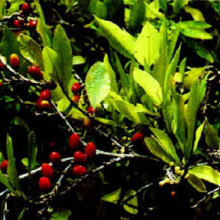
How do plants cope with Virus infections?
Emily - Well that's a really good question and there are some fundamental differences so viruses spread around animals mainly by lysing the cells and then they can go on and infect another one. Whereas they spread around plants via little pores called plasmodesmata. And so, one of the main ways that plants have to deal with viruses is by closing these plasmodesmata. They can use callows or they can use other proteins to block them off and stop them spreading, and they can also do this in the sieve tubes which are the connective tissues around the plant. But in a similar way to animals, plants can also respond to viruses with a hypersensitive response, so this is where the plant cells actually die. They sacrifice themselves and this is a good way of trying to stop the virus spreading. They don't have antibodies which is a big difference again with animals but some scientists are trying to engineer in 'plant bodies'. So for example, tobacco expressing antibodies to the co-protein of the grapevine fan leaf virus have been shown to be somewhat protected from infection by that virus. I think a very key way in which the plants deal with viruses is using small interfering RNAs and these target double-stranded RNA which is unusual in a normal plant cell, but a common thing to find if they're infected with the virus.
Chris - And that's quite similar to humans because Theo asks if it's the same in humans. Human cells also can detect when they have virus genetic material inside them usually because it doubles up and forms this double-stranded RNA and that triggers the cell to unleash a whole cascade of mechanisms that it uses to defend itself including killing itself and also, secreting factors called interferons that put other cells nearby on the alert, making them much less infectable.
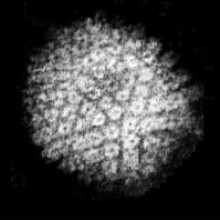
41:33 - Antiviral for Alzheimer's
Antiviral for Alzheimer's
Drugs targeting herpes simplex virus (HSV), the agent that causes cold 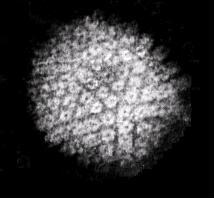 sores, might also abate Alzheimer's, new research has shown.
sores, might also abate Alzheimer's, new research has shown.
Previous research has tied HSV to dementing diseases like Alzheimer's since scientists showed that the DNA of the virus crops up in the brain in the same spots as the beta-amyloid plaques and neurofibrillary tangles that characterise the condition in the brain. HSV-infected neurones also make more of the enzymes and proteins that produce these pathological hallmarks of the disease. But with 80% of people testing positive for herpes simplex infection, it was unclear what, if anything, doctors could do to reduce the risk of Alzheimer's, which currently afflicts about 18 million sufferers worldwide.
Now, Manchester University scientist Ruth Itzhaki has shown that treatment with the safe antiviral agent aciclovir can, in the dish at least, reduce the rate of beta-amyloid formation, thereby mitigating the risk of Alzheimer's. By using a variety of mutant viruses lacking key genes, Itzhaki and her colleagues were able to interrupt the growth of the virus at different stages of its infectious cycle to discover what aspects of viral replication might increase beta-amyloid production. DNA synthesis - when the virus copies its DNA code - they found, appears to be the critical step. Luckily this is the very stage that is targeted by anti-herpes drugs like aciclovir and, sure enough, treating the cells with this agent reduced the rate of production of the tangle-forming proteins and, indirectly, beta-amyloid also.
The results are based only on an in-vitro study, but suggest, given the safety and relative low cost of aciclovir, that a clinical trial is warranted to explore whether antivirals can cut dementia rates in the elderly. As the scientists themselves point out, although a high fraction of the population carry HSV infection for life, in the majority the virus remains in the peripheral nervous system. It's chiefly in the elderly that the virus appears to invade the brain. Therefore, antiviral agents could arrest this process and reduce the risk of progression to Alzheimer's.

Is it possible to detect a transit of Earth across the Sun from Mars?
Dominic - It is incredibly rare for that to happen because the Earth is so much further out in the solar system than Venus. So it's a very small target that you're trying to get across the surface of the sun. I think a transit of Mercury across the surface of the sun has been seen by one of the Mars Rovers. I'm not completely sure on that, but yes, Mercury does transit the sun quite often, but Venus and Earth, much more rare.
Chris - As an aside, scientists did see the first Martian shooting star in recent years! One of the pictures taken by one of the rovers on the surface of Mars showed a lovely shooting star in one of the frames; it was was reported in one of the science journals.

47:29 - Spaceports, IVF and Malaria Vaccines
Spaceports, IVF and Malaria Vaccines
with Richard Branson, Virgin; Dagan Wells, University of Oxford; Tsiri Abunyega, Malaria Vaccine Initiative; Fuwen Wei, Chinese Academy of Sciences
Virgin Galactic Spaceport
The World's first commercial spaceport has opened in the deserts of New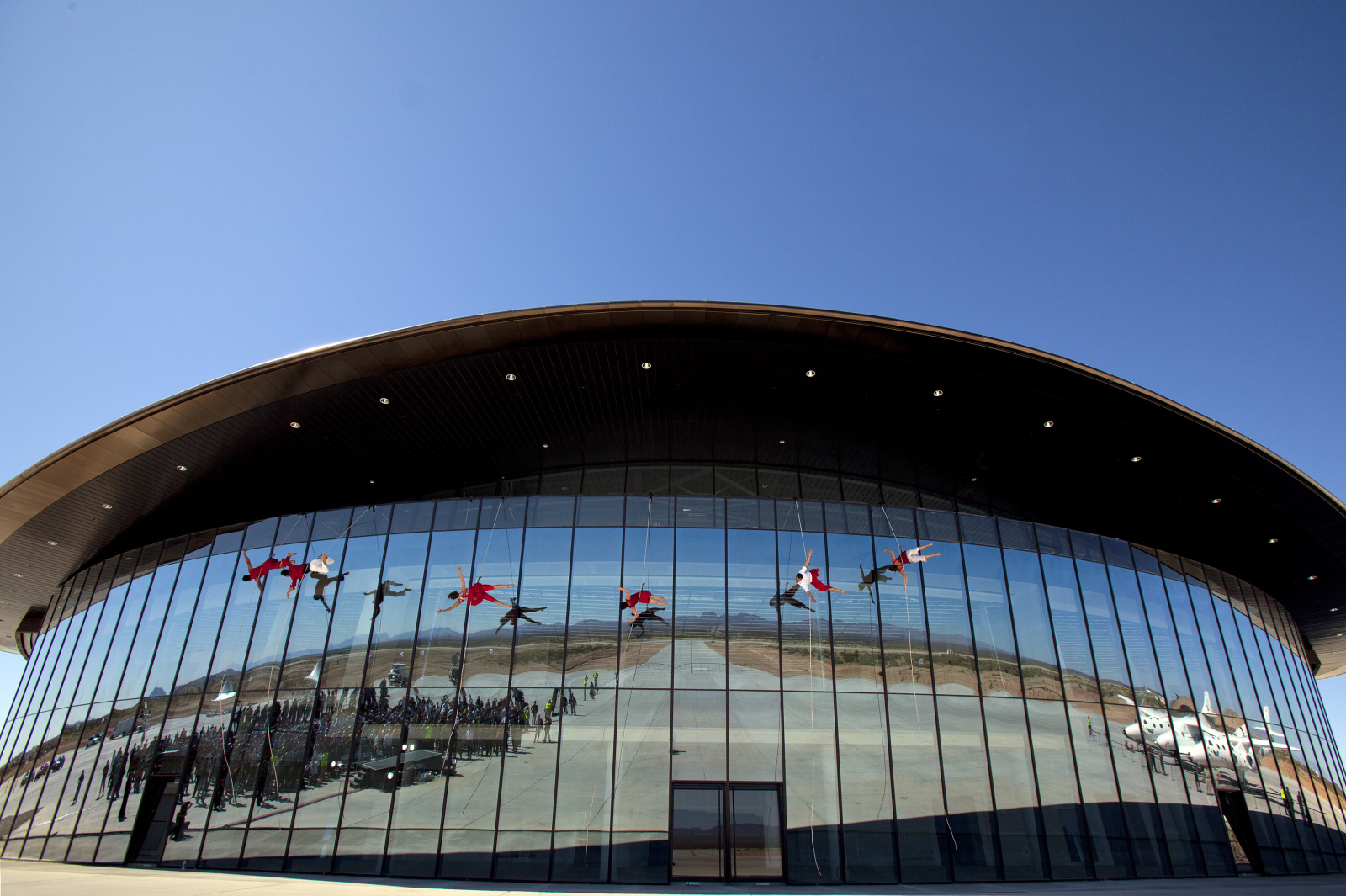 Mexico.
Mexico.
Targeting all budding astronauts, Spaceport America is Virgin Galactics gateway to space providing members of the public five minutes of weightlessness at a cost of £127,000.
The eco-designed building will house seven spaceships, mission control and a visitor experience area for those that can't afford the flight itself.
Sir Richard Branson spoke at the launch.
Richard - These beautiful ships will shortly be ready to welcome the first of more than 450 people paid up and waiting to fly. The building has achieved the lead gold standard using local materials and regional construction techniques and we have minimised energy requirements through the use of geothermal heating and cooling, and extensive energy management practices. Simply put, it's a 21st century building for a 21st century business.
---
Improving the Success of IVF
 A new test could significantly boost the success of IVF treatment.
A new test could significantly boost the success of IVF treatment.
The technique developed by Dagan Wells and his team at the University of Oxford screens potential embryos for genetic and chromosomal abnormalities before they're implanted, improving chances of pregnancy by up to 70%.
Currently in the UK and many other countries globally, the healthy appearance of an embryo is enough for it to be used in a cycle.
Dagan - The embryo that looks the best can often harbour lethal genetic abnormalities. So the new test really combines a bunch of different aspects of embryo biology assessment, so we're looking at the chromosomes, we're looking at the mitochondria which power the cell, we're looking at the telomeres which protect the chromosomes. And together, that's giving us a very deep insight into the health and biology of the embryo.
---
Malaria Vaccine Trial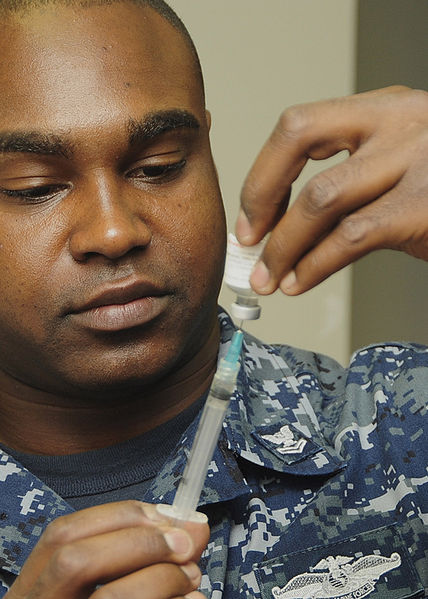
A Malaria vaccine could be on the horizon after promising results from a clinical trial taking place across Africa.
The RTS,S Malaria vaccine is the most advanced Malaria vaccine to date, currently targeting children under 18 months of age. Involving over 15,000 participants across seven African countries, preliminary results from the Phase III clinical trials found infants aged 5 to 17 months receiving the vaccine had about half the risk of developing Malaria than those without it.
Tsiri Abenyega is principle investigator on the trial site in Ghana.
Tsiri - Our results showed that RTS,S reduced the risk of children aged 5 to 17 months, experiencing clinical Malaria by 56% over a 12-month follow up period. The study also found that RTS,S reduced the risk of severe Malaria by 47%. This is remarkable when you consider that there has never been a successful vaccine against a human parasite.
---
Life on a Bamboo Diet
 And finally, new insight into the eating habits of the Giant Panda.
And finally, new insight into the eating habits of the Giant Panda.
Unlike other meat-eating bears, the giant panda is an omnivore with a diet consisting mainly of bamboo - eating up to 12kg of the plant every day. But their ability to digest the cellulose and hemicellulose fibres dominating a bamboo plant has long been a mystery as they lack the digestive enzyme usually found in other herbivores.
Using gene sequencing techniques, Fuwen Wei and his team from the Chinese Academy of Sciences identified unique enzymes and bacteria helping Pandas make a meal of this low nutrient plant.
Fuwen - We found in the panda some special bacteria that could help the pandas digest the fibre. Also, we found some genes coding for enzymes to do this kind of job. But the nutrition is very low, they content, low protein, sugar and fat. So the panda needs to get some part of its nutrients from the fibres.
Despite having these methods of digestion, the bamboo remains low in nutrition explaining just why the Pandas have to eat such large quantities of the bamboo on a daily basis. However the reason they choose to eat this above other foods remains a mystery.

How do you safely destroy radioactive plants?
You'd have to go collect them in a suit and then burn them down, collect the residues and dispose of them safely. If you were talking about another plant, then normally if you're genetically modifying them you autoclave them and kill them that way.
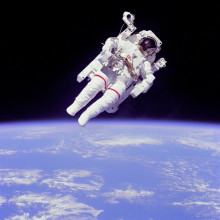
57:09 - What is the minimum gravity needed to keep astronauts healthy?
What is the minimum gravity needed to keep astronauts healthy?
We posed this question to Dr. Kevin Fong, Co-Director of the Centre of Aviation Space and Extreme Environment Medicine...
Kevin - That's an excellent question and the answer is probably. The problem with long duration space flight is that microgravity has a range of very negative consequences for the human body over extended durations and we're talking about going to Mars, missions that may be up to a thousand days in microgravity or only partial gravity. The big question is, how do you protect astronauts during that time and you've got two options - either you go quickly and reduce the exposure to microgravity or you put up with a long duration stay in space and you introduce a counter measure, and that counter measure should be artificial gravity. They've experimented with what might be the best prescription for gravity. You can think of gravity like a drug. certainly on Earth, we are not constantly exposed to an unchanging 1 G environment when you run up and down a flight of stairs, you shock load your joints, and you get more than one G loading at load bearing areas during exercise or impact. When you're asleep and you're lying horizontally on your beds along the vertical axis, your body is essentially perpendicular to the gravitational field and so is gravitationally unloaded. And indeed, that's how we simulate microgravity here on Earth, we put people in bed and tilt them 6 degrees head down. So what is the dose of gravity that would work? I was involved in a pilot study that suggested that if you lay someone down on a short arm centrifuge, and you centrifuge them at a rate of about 40 revolutions per minute on a device that has a radius of about 3 metres that that provides sufficient loading if you do it only twice a day two one-hour doses to protect a lot of the systems of the body, but not all of them. Diana - So, centrifuging astronauts in a wheel similar to the ones you find at the fair ground may be one way of counteracting microgravity and its effects. On the forum, Clifford K said that, "Given gravity very slightly across the Earth, it should be expected that humans can tolerate some differences. But more research is needed to find out if an environment with less than 1G will still be sufficient to maintain good health over time." Next week, why not grow a moustache to answer this question.










Comments
Add a comment